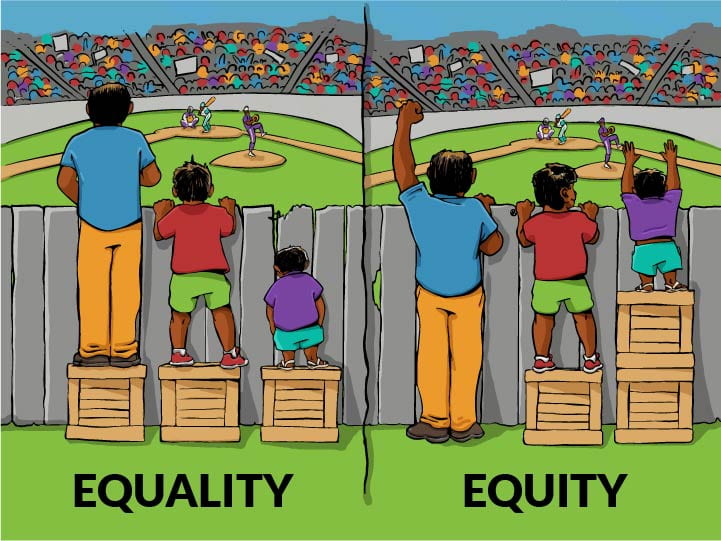Fair and equal access to education is a necessity for all students. This includes students with impairments who might encounter difficulties accessing conventional educational resources. By making learning materials and activities more inclusive, a fair and equitable learning environment can be established for all students. This can be established by making your educational resources accessible.
Accessibility in the Online Classroom
Accessibility in education is critical because it ensures that all students have equal access to educational resources and materials. Students with impairments, such as those who are visually or hearing impaired, may require modifications to use regular learning resources. Teachers can guarantee that all students have the chance to learn and achieve by offering resources that are accessible (Karger & Lazar, 2014).
Teachers can contribute to ensuring that all students have equitable access to all learning materials and activities by applying a variety of accessibility elements. There are several ways to apply accessibility, including:
Providing alternative text for images
This is a brief explanation of an image that enables readers with visual impairments to comprehend its content. It is known as alternative text, or “alt text.” Make sure to add alt text for all of the images when developing educational materials.
Alt text is a short explanation of a picture that helps students who are blind or visually impaired understand its content. When designing instructional resources, it is critical to provide alt text for all photos, except for images used as decorations, which should be labeled as such to avoid misunderstanding.
Using closed captioning for videos
Closed captioning displays the words of the audio in a video into text. Doing so makes it easier for deaf students to comprehend what is being said. Closed captioning is easy to enable and should always be used when producing videos for educational purposes.
Using accessible document formats
Use formats that are user-friendly to all students when developing documents. Providing accessible formatted documents allows students who may use screen readers to properly identify and read aloud the presented information. For instance, when using a PDF, provide things like headers, lists, titles, language, tags, and alternative texts to adequately ensure that all of the information can be conveyed to a student. An easy way to remember these considerations is with the acronym SCULPT (Wilson, 2020, para. 3):
- Structure documents with headings
- Colors that have strong contrast
- Use of alt text for non-decorative images
- Links provided in descriptions
- Plain, simple, and clear language
- Table structures that are simple
Providing accessible online platforms
Make sure all students can access the learning materials and activities on the provided internet platforms. This involves making sure the platform is appropriate for assistive technology such as braille displays or screen readers. Accessibility information can be found on any websites used outside of D2L. The D2L Brightspace platform is accessible. Teachers will have to make sure what is added into D2L is too.
Get Started with Accessibility
With a little time and effort, accessibility can be easily incorporated into any learning material. When accessibility is kept in mind while searching for and developing materials for a course, it makes providing equity and inclusivity in the course easier. Following these steps will be a good start to becoming more knowledgeable and familiar with adding accessibility to a course.
- Gain knowledge on accessibility best practices. To better meet different student needs and promote an inclusive learning environment, instructors will want to learn about accessibility best practices. Best practices are a great starting point to build from and grow your knowledge. These can be obtained through professional development and training sessions, seminars, and online resources. The Student Accessibility Services (SAS) website is a great place to start a search. Their office provides faculty and students with the information they need for understanding and receiving accessibility services and materials.
- Collaborate with students with disabilities. When it comes to accessing learning resources, teachers should collaborate with students who have disabilities to understand their requirements and preferences. Open lines of communication with these students could help them to feel more included in the course (Van Noy et al., 2015). This collaboration could also assist with improving knowledge and awareness through gained insight, provided by students who use the materials.
- Share knowledge with colleagues. By sharing knowledge this may foster a more welcoming and fair learning environment for all students. Regularly collaborating with those colleagues who are knowledgeable about accessibility practices can help to increase awareness, understanding, and implementation (Van Noy et al., 2015).
Although it can take a little additional work, making learning materials and activities accessible is a crucial step. Making the classroom more inclusive and equitable for all students provides everyone a fair chance to learn.
Various Microsoft Office apps and Adobe Acrobat contain accessibility features and checkers already built in to help with incorporating accessibility into your learning materials. If you need any assistance with this, the SCSU Online and Distance Learning team can provide guidance and tools to get you on the right track. Reach out to us via email or through Bookings.
Additional Reading:
For more information about creating inclusivity within a course, check out this previous blog post.
For more information on equity through the use of technology, check out this previous post.
References:
Garcia, V. (2020). Photo Of Person Pointing On The Screen [Photograph]. Pexels. https://www.pexels.com/photo/photo-of-person-pointing-on-the-screen-6326107/
Karger, J., & Lazar, J. (2014). Ensuring that students with text-related disabilities have access to digital learning materials: A policy discussion. Perspectives on Language and Literacy, 40(1), 33-38.
National Center on Deaf-Blindness. (n.d.). Why is accessibility important? Retrieved August 13, 2019, from https://www.nationaldb.org/for-state-deaf-blind-projects/accessibility-toolkit/why-accessibility-is-important/#:~:text=Accessibility%20means%20that%20all%20people,members%20of%20the%20digital%20world
Seale, J., Draffan, E. A., & Wald, M. (2010). Digital agility and digital decision-making: Conceptualising digital inclusion in the 21st century. Studies in Higher Education, 35(4), 445–461. https://doi.org/10.1080/03075070903131628
Van Noy, M., Heidkamp, M., & Kaltz, C. (2015). How are Community Colleges Serving the Needs of Older Students with Disabilities? NTAR Leadership Center. https://www.dol.gov/sites/dolgov/files/odep/pdf/communitycollegesolderstudents.pdf
Wilson, H. (2020). SCULPT [Infographic]. AbilityNet. Retrieved on April 24, 2023 from https://abilitynet.org.uk/news-blogs/everyone-can-sculpt-accessibility
Harihara Varma Aketi is a Graduate Assistant at the Online and Distance Learning department at Saint Cloud State University. He did his bachelor’s degree in Information Technology, and currently, he is pursuing a Master’s in Computer Science at Saint Cloud State University.





